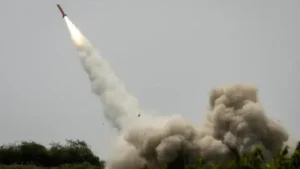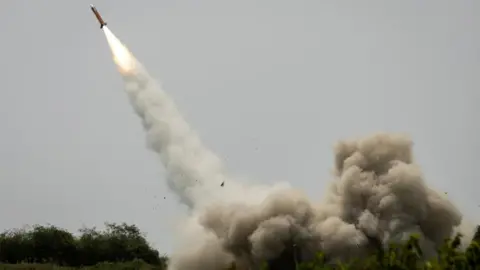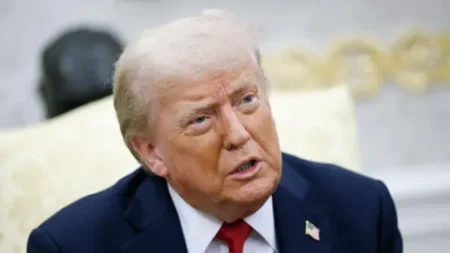In a significant turn of events, former President Donald Trump has made waves by pledging military support for Ukraine during his latest meeting in the White House. This declaration marks a critical milestone, as it represents the first time Trump has articulated such promises since his return to the presidency. According to the terms outlined, the United States will facilitate the sale of weapons to NATO member states, which will, in turn, supply these arms to Ukraine as it continues its fight against the ongoing Russian invasion.
While specifics regarding the new military assistance remain somewhat vague, Trump has asserted that the agreement encompasses “billions of dollars’ worth of military equipment.” In a notable moment, when pressed on whether this package would include critical assets like Patriot air defense systems and interceptor missiles, Trump confidently responded, “it’s everything.” This comment suggests a comprehensive array of weapons that will bolster Ukraine’s defensive and offensive capabilities against Russian forces.
A particularly impactful aspect of this development is the announcement that one European nation possesses 17 Patriot systems, with a “big portion” set to be transferred to Ukraine soon. This increase in military aid comes at a crucial moment for Kyiv, which has been operating only a limited number of missile batteries—reportedly just eight. The infusion of Patriot systems represents a monumental step toward enhancing Ukraine’s air defense and its ability to repel both ballistic and cruise missile threats.
Alongside Trump at this conference was NATO Secretary General Mark Rutte, who emphasized that this agreement transcends simple arms deliveries. Rutte indicated that the military package would encompass vast quantities of equipment, including various types of missiles and munitions. The collaborative nature of this military support is underscored by Trump’s remarks regarding European countries lining up to partake in this initiative, citing nations like the UK, Germany, Finland, Sweden, Norway, and the Netherlands. Trump has characterized this moment as just the “first wave,” suggesting that more assistance and resources could be on the horizon.
In a striking juxtaposition, the announcement of new military commitments comes shortly after a disconcerting pause in shipments to Ukraine, including key Patriot systems. Just two weeks prior, news of the Pentagon suspending military shipments sparked outrage in Kyiv. However, Trump appeared to play down the significance of this interruption, suggesting that the decision was made knowing that a new deal was imminent. He remarked, “We were pretty sure this was going to happen, so we did a little bit of a pause,” implying a strategic maneuver.
The broader implications of this agreement extend beyond military logistics. Trump has also issued a strong warning to Russia, indicating that if President Vladimir Putin does not agree to a ceasefire within the next 50 days, Russia and its trading partners will face 100% secondary tariffs. This approach, encouraging pressure on Russia from its oil and gas customers, aligns with recommendations previously made by both Kyiv and certain members of the U.S. Congress.
The timing of these declarations and actions represents a potential turning point in U.S.-Russia relations, particularly as Trump navigates a pathway between his prior admiration for Putin and the urgent necessities of supporting Ukraine. Though this current stance departs from Trump’s previous neutrality, it does not completely mirror the unwavering commitments laid out by President Joe Biden, who has vowed to support Ukraine “for as long as it takes.”
Ultimately, Trump’s commitment to keeping the crucial weapons supply line to Ukraine open is contingent on the willingness of NATO allies to finance these operations. While this may temporarily bolster the Ukrainian defenses, the pressure of an expiring 50-day deadline looms over their heads, as they face a relentless barrage of missile attacks and drone strikes from Russian forces. The prospect of a more equipped Ukrainian military is promising, yet immediate relief seems to remain an elusive goal amidst the ongoing conflict.











